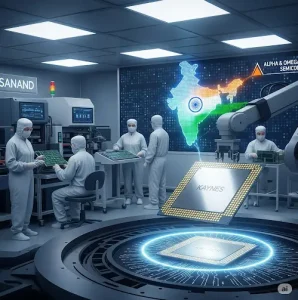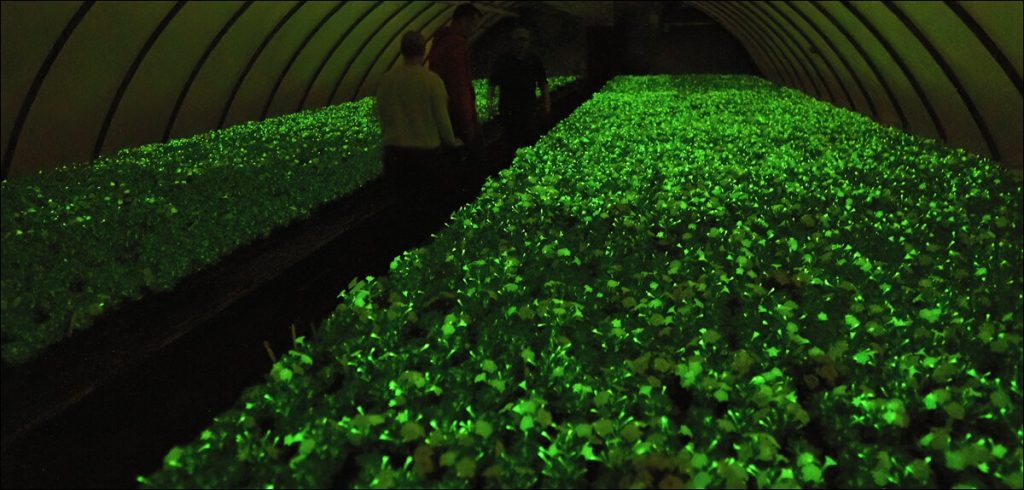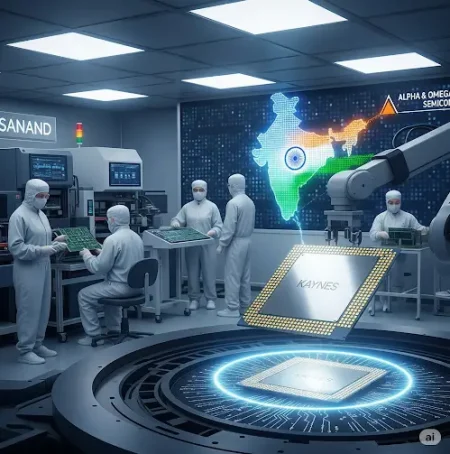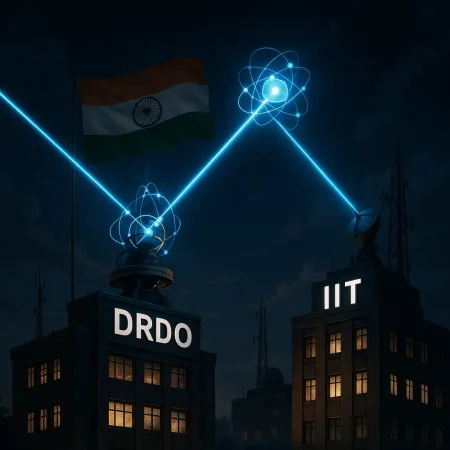Light Bio has also received approval from the United States Department of Agriculture to sell its plants in all 48 states of the US.
From the glow friends of the 80s to the glowing stars and planets we stick to our ceilings, to glowing watches, and our obsession with fireflies, humans love shiny things that glow. Glowing plants are a part of almost every animated movie including some famous CGI movies like The Life of Pi where there’s an entire glowing island or Avatar where there’s an entire glowing planet. While there have been successful attempts to make plants glow in the past, they weren’t permanent or self-sustaining solutions and were more like lab novelties. For example, in 2017 researchers at MIT achieved bioluminescence in plants by injecting them with luciferase, the enzyme responsible for bioluminescence in fireflies. It does this by acting on a molecule called luciferin that makes them glow.

Autoluminescence
The glow was only sustained for about 45 minutes, however, and the amount of light was a thousandth of what is required from a reading lamp. This research was further improved upon by another MIT team in 2021, during which they injected plants with nanoparticles to increase the amount of light and the duration of the glow. While the brightness of the glow was greatly improved, they only got it to last for an hour. This could be because they were injecting a plant with “glowy stuff” (nanoparticles) and not creating a plant that would inherently glow. The ability of living organisms like fireflies, mushrooms, fish, and plankton to exhibit bioluminescence autonomously without the addition of a substrate or action of external stimuli is called autoluminescence.
Now to create a plant that is truly autoluminescent or can glow inherently without any “help,” genetic engineering is a complexity that cannot be escaped. Typical genetic engineering methods to make plants glow include incorporating genes from other autoluminescent organisms like fungi or bacteria. This was done successfully on tobacco plants by a team of researchers in 2020, who published their findings in the Nature Journal. The engineered plants were able to convert caffeic acid into luciferin, the molecule we mentioned earlier that makes fireflies glow. The problem with this method so far has been that it is a complex process that typically involves the integration of five different genes into the target plant, making the process commercially unviable on a large scale.
Firefly Petunias
That is, until now. Light Bio, a Wisconsin-based biotech firm founded by CEO Keith Woods in 2019, has found a way to use a single gene that is indigenous to plants in place of two fungal genes, resulting in a more compact gene for the target plant. This compact gene is cheaper and easier to produce, and the reason why you can buy Firefly Petunias online for $29 right now. That’s right, you can log on to the Light Bio website right now and order autoluminescent plants with deliveries expected to begin this month. The folks at Light Bio have achieved this feat by using their breakthrough compact gene method to integrate DNA from a bioluminescent mushroom into garden petunias.
The result is petunias that are not only Autoluminiscent but have a direct link between their metabolism and light production so you can watch a light show while also studying how they digest their food. While the Firefly Petunias from Light Bio look like ordinary Petunias during the day, the leaves come alive with a glow akin to moonlight at night, making them look like fireflies, hence the name. The plants are extremely easy to care for and can be grown in pots, baskets, and on balconies. They attain a height of about eight to ten inches pretty quickly and produce lots of white flowers. The company also claims that its plants are 100 times brighter than previously possible thanks to their breakthrough with the compact genes.

Glowing gardens of the future
Now there’s no doubt that this “have-to-have” novelty is the best gift you could get for someone for $29, and the good news is that Light Bio expects to have more glowing plants with more colors on its menu soon. Plants that have been experimented on successfully include Roses, Periwinkles, Tobacco, Thale Cress, Canadian Poplar, Blenth, and more. Light Bio has also received approval from the United States Department of Agriculture to sell its plants in all 48 states of the US. For the rest of the world, I guess we need to wait for them to start international shipping. An interesting note to end on is that in addition to the purely aesthetic value of a glowing plant, scientists are using bioluminescence in plants to study a whole world of processes, signals, communications, and defense mechanisms that were previously not possible to witness.
In case you missed:
- Could Dimming the Sun Be the Solution to Global Warming?
- What Is Electronic Soil?
- CDs are making a comeback, on a petabyte-scale capacity!
- Could the Future of Communication Be Holographic?
- How AI Is Helping Restore the World’s Coral Reefs
- Dire Wolves are not back; what we got are designer dogs for GoT fans!
- Humans Just Achieved Teleportation? Clickbait vs. Facts
- Schrödinger’s Cat Just Made Quantum Computers 160x More Reliable!
- California startup develops app to sell sunshine at night
- Scientists establish two-way Lucid Dream communication!










